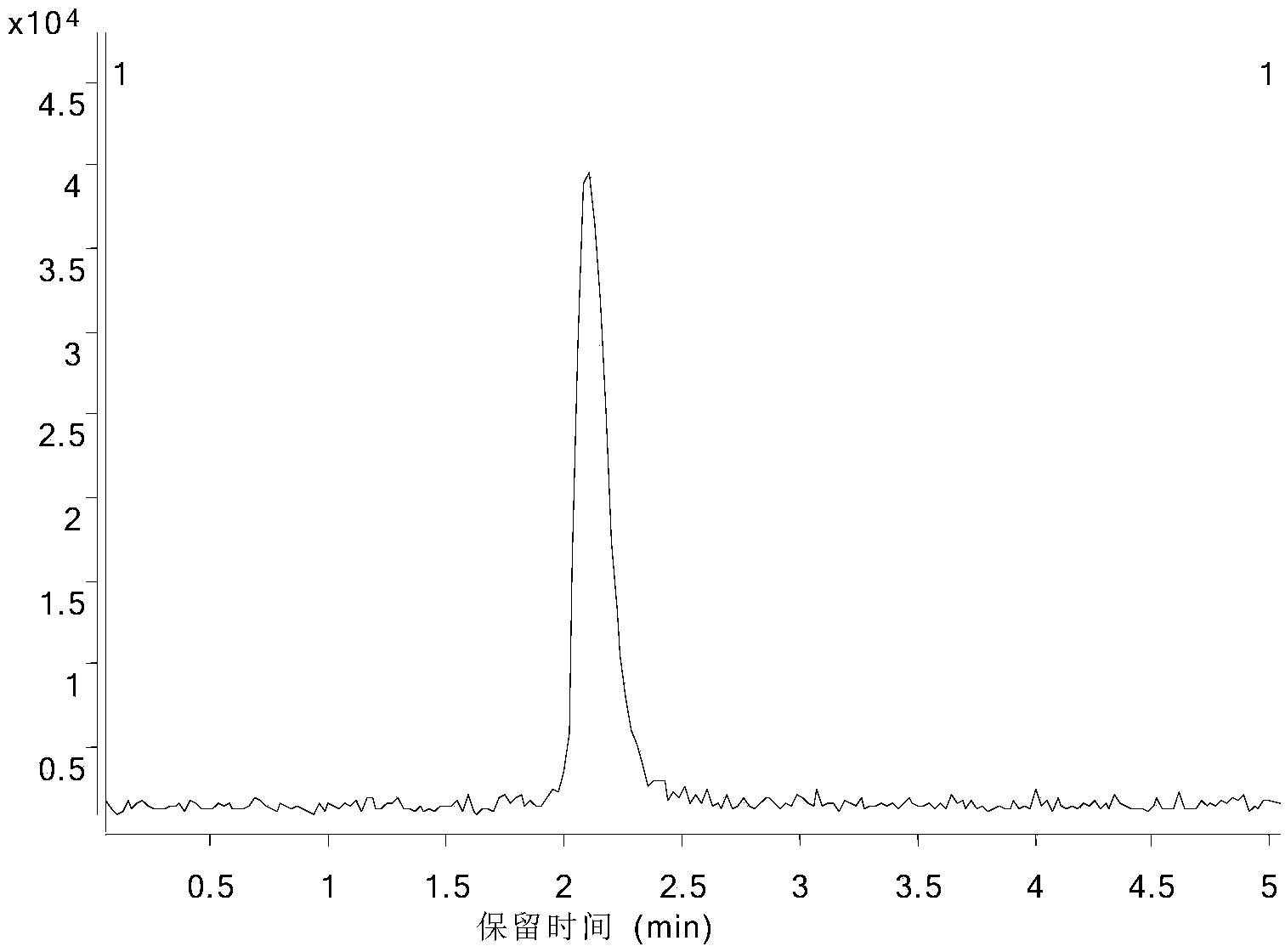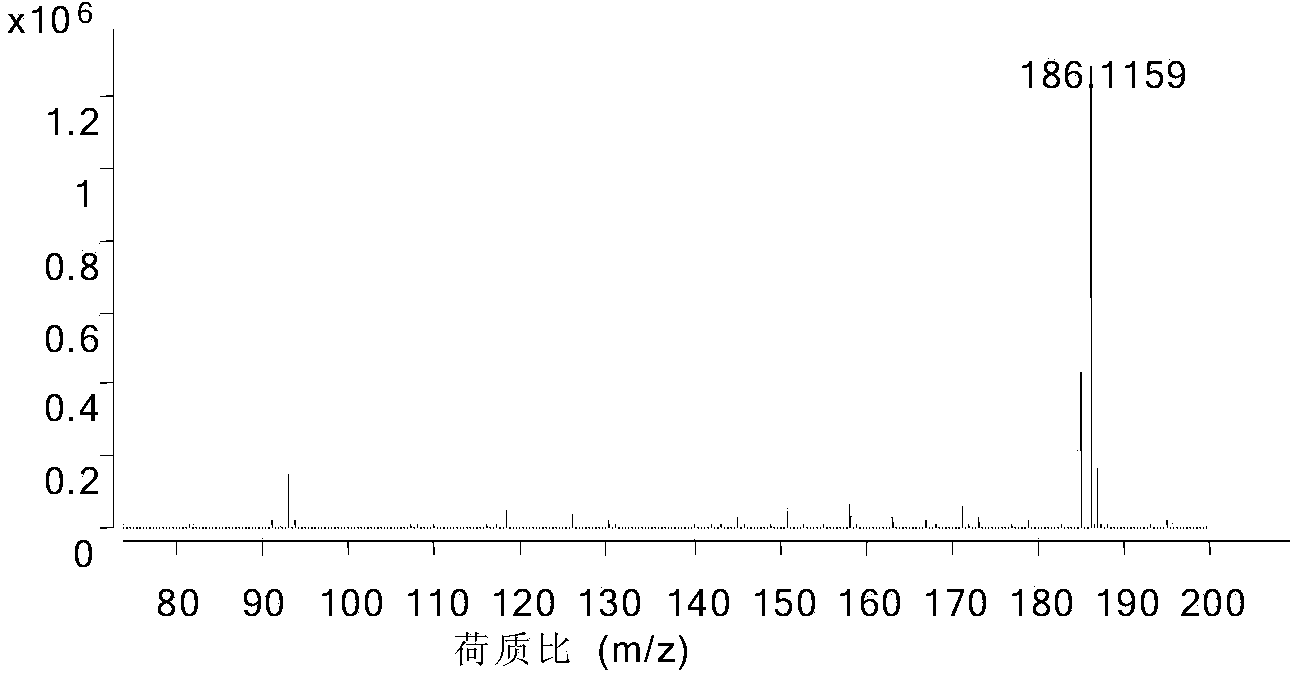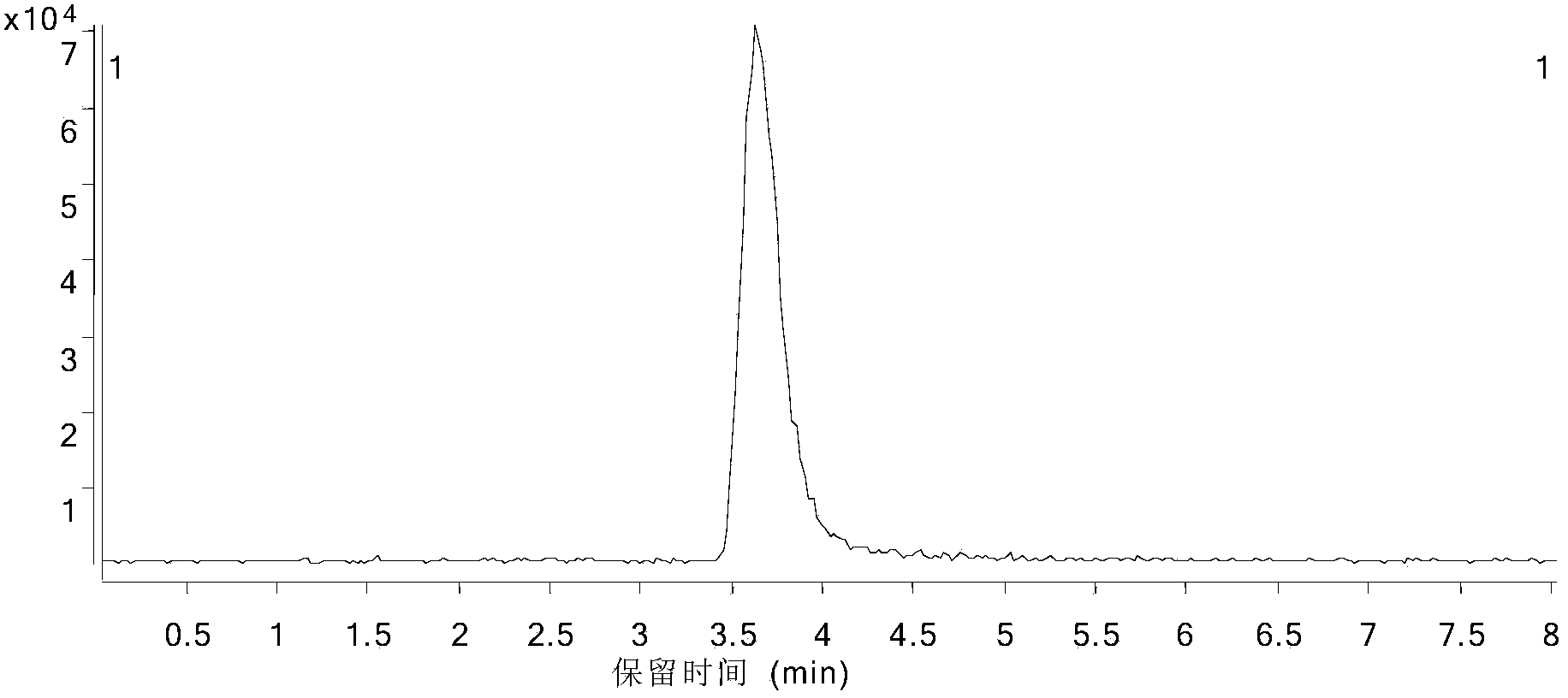Method for measuring residual quantity of paraquat and diquat in food
A determination method and technology for paraquat, applied in measuring devices, instruments, scientific instruments, etc., can solve the problems of inability to detect paraquat and diquat residues, and achieve the effect of accurate analysis, guaranteeing healthy development and improving sensitivity
- Summary
- Abstract
- Description
- Claims
- Application Information
AI Technical Summary
Problems solved by technology
Method used
Image
Examples
Embodiment 1
[0041] Example 1: Detection of paraquat and diquat residues in apples
[0042] (1) Sample pretreatment
[0043] Weigh 10.0 g of the homogenized apple sample into a 50 mL stoppered plastic centrifuge tube, add 10 mL of aqueous methanol, vortex for 1 min, and centrifuge at 5000 r / min for 5 min. After centrifugation, take 2 mL of supernatant extract to fill with 100 mg C 18 and 100mg PSA in a centrifuge tube, vortex for 1min, and centrifuge at 5000r / min for 3min. After the supernatant was passed through a 0.22 μm filter membrane, the obtained sample liquid was determined by liquid chromatography-quadrupole time-of-flight tandem mass spectrometry (LC-Q TOF).
[0044] (2) Preparation of standard working solution
[0045] Weigh 25±0.1mg of paraquat and diquat standard substances into 25mL plastic volumetric flasks, dissolve them with acetonitrile, and make the standard stock solution concentration 1000.0μg / mL; pipette the standard stock solutions of paraquat and diquat respective...
PUM
| Property | Measurement | Unit |
|---|---|---|
| recovery rate | aaaaa | aaaaa |
Abstract
Description
Claims
Application Information
 Login to View More
Login to View More - R&D
- Intellectual Property
- Life Sciences
- Materials
- Tech Scout
- Unparalleled Data Quality
- Higher Quality Content
- 60% Fewer Hallucinations
Browse by: Latest US Patents, China's latest patents, Technical Efficacy Thesaurus, Application Domain, Technology Topic, Popular Technical Reports.
© 2025 PatSnap. All rights reserved.Legal|Privacy policy|Modern Slavery Act Transparency Statement|Sitemap|About US| Contact US: help@patsnap.com



